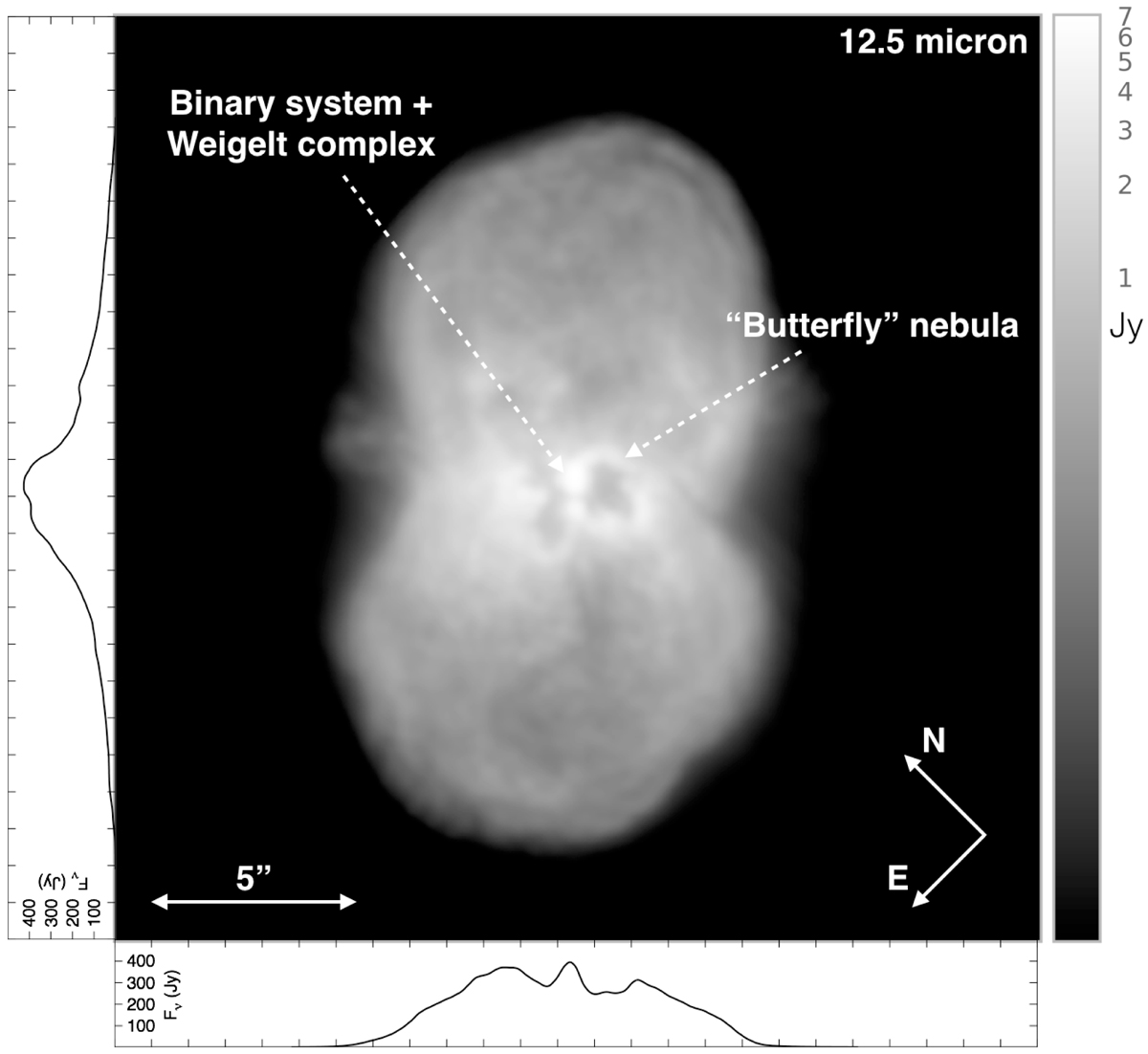Fig. 1.

VISIR image of the Homunculus nebula at 12.5 μm in 2018, tracing the thermal emission from heated dust and the H I 7−6 emission. The field of view is 25″ × 25″, and the spatial resolution is 0.3″. The flux density in Jy per detector pixel (0.045″ pixel−1) is shown as well as the integrated flux along the image axes. The brightest knot in the center of the nebula is due to a shell that surrounds the star, to an inner torus or disk, or to a pin-wheel structure, and it includes the Weigelt complex (Weigelt & Ebersberger 1986). The two bright loops form the Butterfly nebula from which 50% of the integrated flux originates.
Current usage metrics show cumulative count of Article Views (full-text article views including HTML views, PDF and ePub downloads, according to the available data) and Abstracts Views on Vision4Press platform.
Data correspond to usage on the plateform after 2015. The current usage metrics is available 48-96 hours after online publication and is updated daily on week days.
Initial download of the metrics may take a while.


